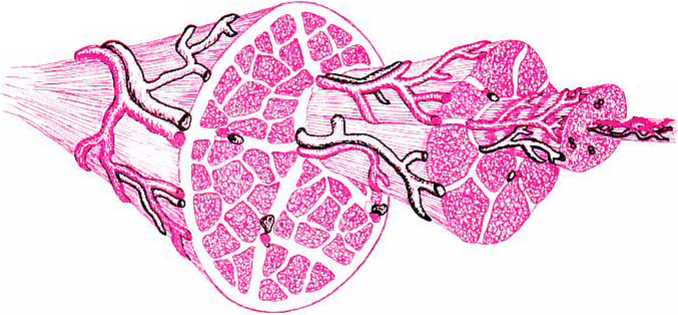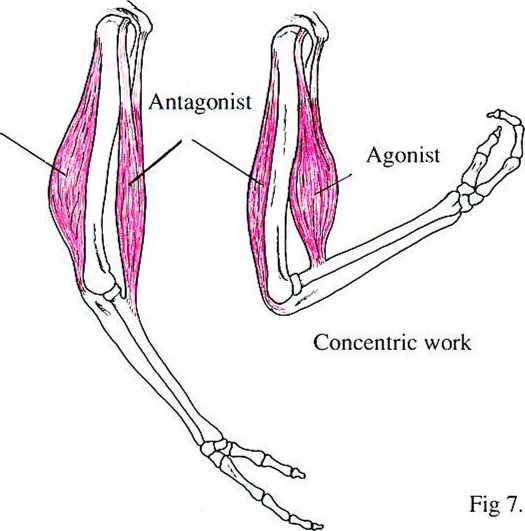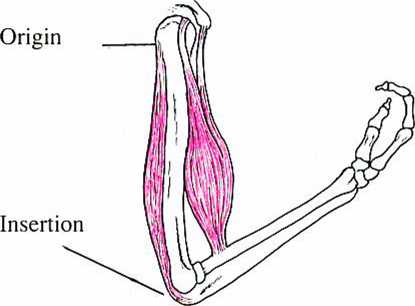autostretching0244
Your muscles contain a great number of tiny blood vessels or capillaries. Normally there are some 3000 of them in a cross-section measuring just one square millimeter. When the muscle is at rest, most of the capillaries are closed. As muscles start working. they open wider and wider (Fig 5). The harder the work, the morę blood flows through the capillaries. Morę motor unils are activated, the muscles work with grealer force, and in time they get stronger.
Capillaries
Blood vessels

Fig 5.
Each muscle is connected to the skeleton by an origin and an insertion (in some cases morę than one). (Fig 6).
Muscles have two basie ways of working (Fig 7):
• Concentrically, when the muscle fibers contract (shorten) so that origin and insertion come closer to each other.
• Eccentrically, when the muscle fibers lengthen so that origin and insertion move away from each other. When a muscle contracts without changing its length we cali it isometric contraction.

Eccentric work
The muscle at work is called the agonist. Other muscles cooperating with it are known as synergists. On the other side of the joint you find a muscle with the opposite function to the agonist, logically called the antagonist. Agonist and antagonist take turns working: when the agonist contracts, the anlagonist gets longer, and vice versa.

Agonist
Fig 6.
If the muscle work is too hard, the agonist may stay partly contracted afterwards. The muscle is left too short and stiff. As yet, science hasn’t come up with the physiological explanation for this, but you experience it yourself every time you overdo it and get stiff.
4
244
Wyszukiwarka
Podobne podstrony:
PG038 76 FoodJapanese Food There are a great number of different kinds of eating places in Japan. Am
If you think your girl has a great sense of humor Try leaving a trail of rosę petals leading to a si
Acta Polytechnica Hungarica Vol. 5, No. 4,2008 The first impression when considering the numbers of
Analog & Digital Signals. /V ► Analog signals: They are continuous and has infinite number of va
Figurę 8.2 LICZBY CHROMOSOMOWU ROŻNYCH GATUNKÓW Number of chromosomes in body cells 3e *Fruit fly
Humań Gene Count Tumbles Again ScienceDaily (Jan. 15, 2008) — Estimates of the number of genes in th
reduced to a minimum, the number of inscriptions was still too great to allow the map to serve pract
kolibry w malwach (1) SORT YOUR COLORS Identify your colors by comparing them in daylight and checki
25ddg11 Text Import Wizard - Step 2 of 3 This screen lets you set the delimiters your data contains.
pohl 2 PÓHL-VAULT YOUR MIND UPTIME I Frederik Pohl, co-author with the late, great C. M. Kombluth
cukier How much&uqardoes your ®-^drink contain? Active teen girls should have no morę than 10 te
vibro 08 1* BEST IN10 GMTHE MORNING A good stretch in the morning to get the kinks out of your muscl
więcej podobnych podstron